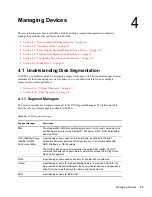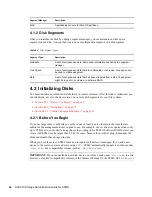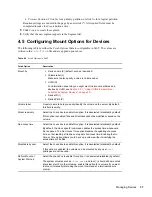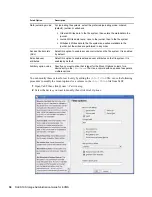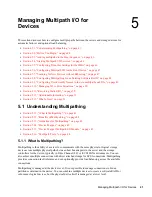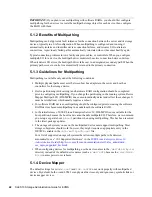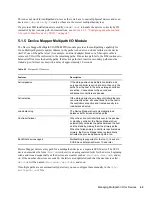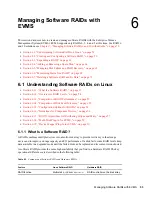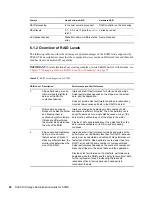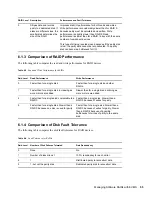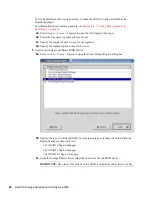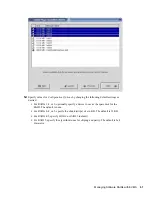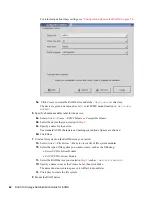
Managing Multipath I/O for Devices
47
no
vd
ocx (
E
NU)
9
Jan
uar
y 2
007
5.6 Configuring Multipath I/O for the Root Device
In the initial release, the root partition on multipath is supported only if the
/boot
partition is on a
separate, non-multipathed partition. Otherwise, no bootloader is written.
NOTE:
This issue is resolved in updates since the initial release.
To enable multipathing on the existing root device:
1
Install Linux with only a single path active, preferably one where the
by-id
symlinks are
listed in the partitioner.
2
Mount the devices using the
/dev/disk/by-id
path used during the install.
3
After installation, add
dm-multipath
to
/etc/sysconfig/
kernel:INITRD_MODULES
.
4
Re-run
/sbin/mkinitrd
to update
initrd
image.
5
Reboot the server.
To disable multipathing on the root device.
1
Add
multipath=off
to the kernel command line.
5.7 Scanning for New Devices without Rebooting
If your system has already been configured for multipathing and you later need to add more storage
to the SAN, use the following procedure to scan the devices and make them available to
multipathing without rebooting the system.
1
On the storage subsystem, use the vendor’s tools to allocate the devices and update its access
control settings to allow the Linux system access to the new storage. Refer to the vendor's
documentation for details.
2
On the Linux system, use the HBA driver commands to scan the SAN to discover the new
devices. The exact commands depend on the driver.
For example, for a QLogic 2300 HBA, the command is
echo scsi-qlascan >/proc/scsi/qla2xxx/<host number>
At this point, the newly added device is not known to the higher layers of the Linux kernel's
SCSI subsystem and is not yet usable.
3
Scan all targets for a host to make its new device known to the middle layer of the Linux
kernel's SCSI subsystem. At a terminal console prompt, enter
echo "- - -" >/sys/class/scsi_host/host<hostnumber>/scan
4
Run the Multipath tool to recognize the devices for DM-MPIO configuration. At a terminal
console prompt, enter
multipath
You can now configure the devices for multipathing.
Summary of Contents for LINUX ENTERPRISE SERVER 10 - STORAGE ADMINISTRATION GUIDE FOR EVMS
Page 4: ...novdocx ENU 9 January 2007 ...
Page 8: ...8 SLES 10 Storage Administration Guide for EVMS novdocx ENU 9 January 2007 ...
Page 10: ...10 SLES 10 Storage Administration Guide for EVMS novdocx ENU 9 January 2007 ...
Page 40: ...40 SLES 10 Storage Administration Guide for EVMS novdocx ENU 9 January 2007 ...
Page 52: ...52 SLES 10 Storage Administration Guide for EVMS novdocx ENU 9 January 2007 ...
Page 74: ...74 SLES 10 Storage Administration Guide for EVMS novdocx ENU 9 January 2007 ...
Page 84: ...84 SLES 10 Storage Administration Guide for EVMS novdocx ENU 9 January 2007 ...

